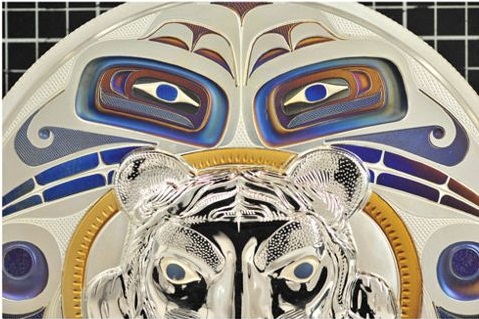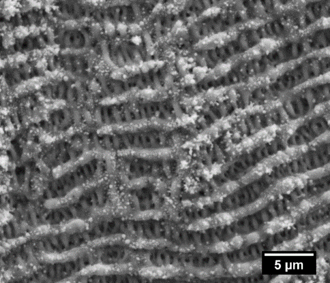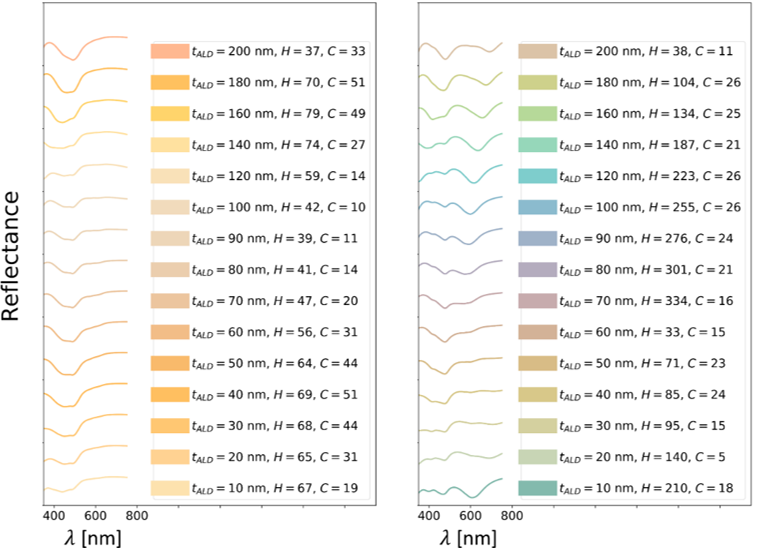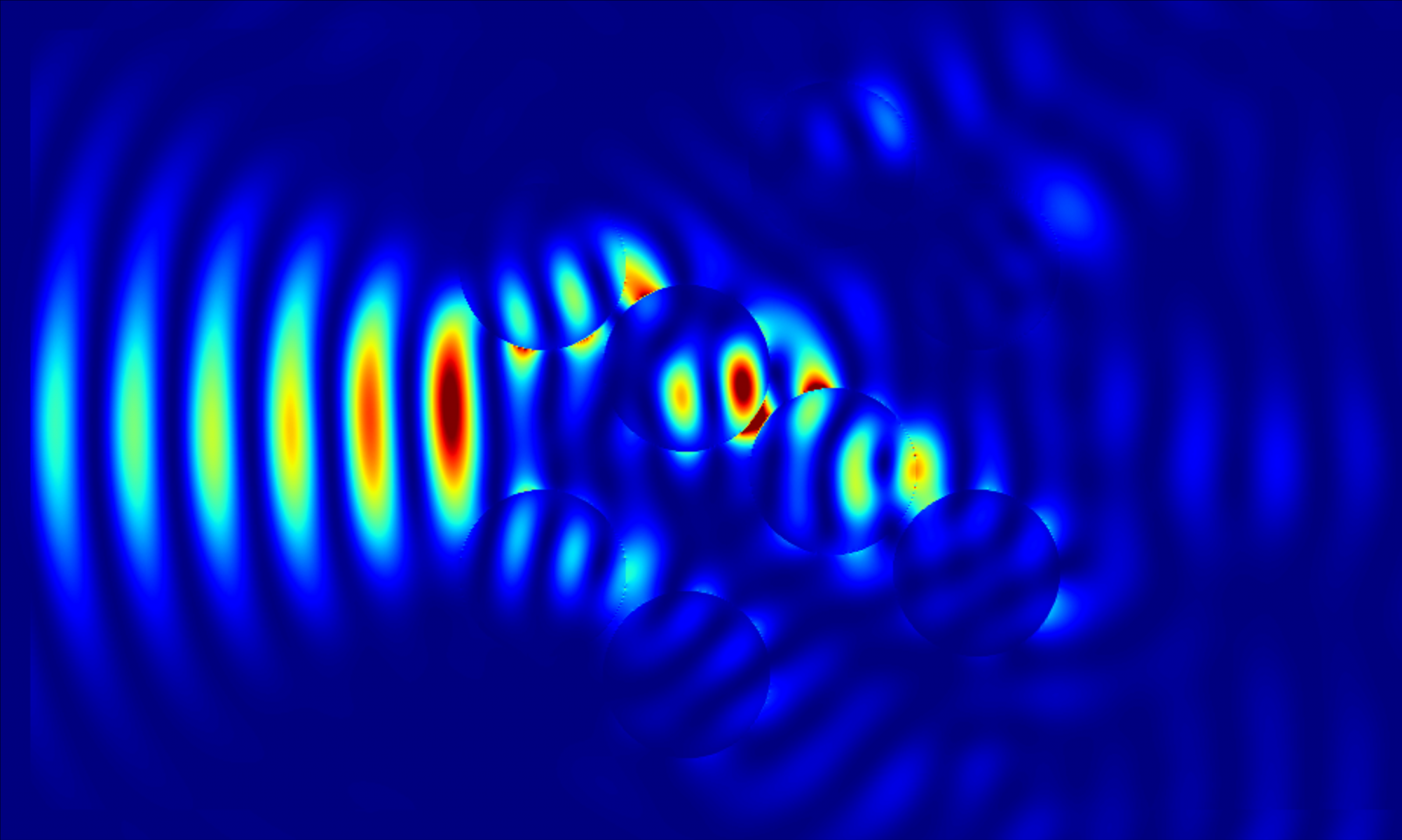Understanding colour on laser-written metal surfaces:

The Royal Canadian Mint together with researchers at UOttawa developed laser ablation and redeposition processes for colouring metallic surfaces without paint. SEM images reveal complex distributions of nanoparticles on the metal surface. Our simulations revealed that colour formation occurs by selective absorption due to plasmonic resonances, and is highly dependent on inter-particle spacing and particle sizes. This joint experimental-computational work was published in Nature Communications (2017).
Plasmonic color enhancement via laser bursts:

Experiments at the Royal Canadian Mint showed that laser-written colours are more saturated in the presence of an underlying nanostructured topography, such as the ripple structures visible in the SEM image at right. These underlying ripples can have different periodicity along different directions, and they are created via laser bursts. We were able to reproduce and understand the origin of colour saturation as a function of ripple depth via simulation of nanoparticles on a sinusoidal surface. This work is published in Advanced Optical Materials (2018).
Effect of alumina coating on laser-written colours :
In order to passivate the laser-written coloured metal surfaces of the Royal Canadian Mint, atomic layer deposition (ALD) of alumina was investigated. Though only some nanometers thick, the coating was found to change the optical properties of the surfaces, and ultimately the colour. Through detailed simulations we were able to explain the trend seen in experiments, where the colour is observed to change as a function of ALD thickness, and then after a sufficient number of layers, ultimately recovers (see figure below). This work was published in Nanophotonics (2019).

